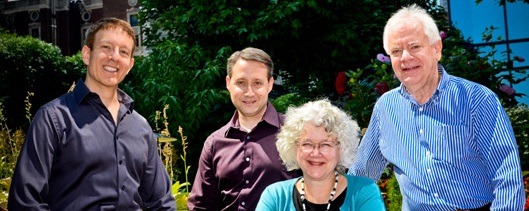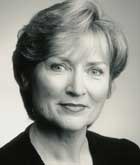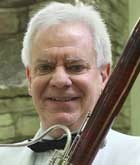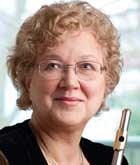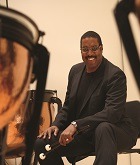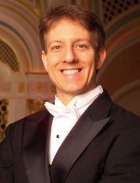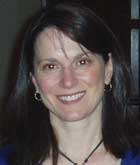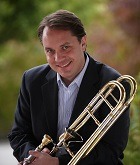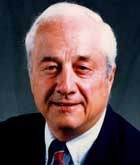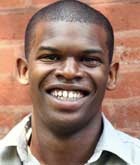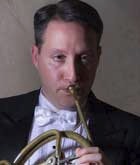Chicago Philharmonic Society
 Chicago Philharmonic Society
Chicago Philharmonic Society
An Orchestra Spotlight
Ann Drinan, June 2014
When Paul Judy, Board Chairman of the Chicago Philharmonic Society (CPS), inquired as to whether Polyphonic would be interested in a story about the CPS organization, I was chagrined to admit that I was not familiar with it. My immediate question was, “What makes this musical organization interesting enough to warrant a spotlight?”
After speaking with Paul on the phone, we decided that I really needed to come to Chicago to find out for myself how and why the CPS is unique. It is indeed so in a variety of ways:
- The roster is comprised of the very top talent among Chicago free-lancers and a core group of Chicago Lyric Opera orchestra players.
- There are no auditions and no formal contracts.
- The Executive Director is a former player.
- Musicians make up the majority of the Board.
- The Personnel Committee (which oversees all orchestra personnel matters) is comprised primarily of musicians.
- The Musicians Advisory Council has 35 musician members. Eleven of these musicians are on the Board, and another five serve on Board committees.
- The Society has an active chamber music series.
- The orchestra plays in Evanston, on the campus of NorthwesternUniversity, and attracts a wide audience. The CPS also provides the pit orchestra for the Joffrey Ballet, plays in the summer as the Ravinia Festival Orchestra and the Chicago Philharmonic, and contracts for various other orchestra services as the Chicago Philharmonic Orchestra (CPO).
All very interesting items to consider. Here are a few general comments describing the experience of playing with the CPO, from some of the players:
Jim Birkenstock, bassoon: ”Many musicians say that this is the best playing they do all year.”
Reed Capshaw, trombone: “It’s a great orchestra – many of the players come from the Lyric, but the reality of what it pays never matches up with the quality. It’s always a fun orchestra to play with because the musicians are great – it’s one of the better playing experiences you can have.”
Bobby Everson, timpani: “As a jobber, the main attraction of the CPO is its high level of musicianship. I’ll always give preference to the CPO if I can – it’s the place to be!”
Neil Kimel, French horn: “If you’re freelancing in Chicago, you must be good. There’s a serious depth of skill in the pool of available players. We’re not always the same orchestra, which creates its own challenges but also promotes malleability. The CPO has a lot of spontaneity.”
Barbara Haffner, ‘cello and a graduate of the Eastman School of Music[1]: “I came to Chicago in 1977, after spending seven years in the Philadelphia Orchestra, to play with the Lyric. I left Philadelphia because I grew tired of playing the same “chestnuts” over and over. The people in Orchestra of Illinois [the original name of the CPS] invited me to play with their orchestra, and I’ve been here for many years.”
The CPS does not have a Music Director, and all artistic programming and musician personnel matters are handled by two committees. Scott Speck serves as Artistic Director, is the key advisor to the Artistic Committee, and conducts three or four of the five subscription concerts. His description of his involvement with the CPS is very telling: “I’m really into it – I love the collaborative nature of the organization. The orchestra uses chamber music-styled playing, where everyone’s input is important and essential. It is so much fun [to conduct the CPO] – it’s never a chore. It’s not a suburban community orchestra – the quality of it must be recognized. I’m genuinely interested in change in the orchestra culture, and the CPO provides a proving ground for change.”
But what’s perhaps most unique about the CPS is their self-definition as a “community of musicians.” The Society draws from a community of over 200 professional musicians to form orchestral and chamber music groups for various performances. A musician involved with the CPS is defined as a “Performing Member of the Society,” which comes with benefits. To quote a CPS organizational structure document, the absence of the constraints of a collective bargaining agreement provides the Society with “operational flexibility, adaptability, and nimbleness” and their ability to field a variety of musical ensembles “is a unique dimension of the organization.”
The phrase “community of musicians” was first used by legendary orchestra manager Ernest Fleischmann in his 1987 commencement address to the graduates of the Cleveland Institute of Music. Fleischmann talked about the need to “shed” some of the traditionally-accepted notions about the shape and structure of orchestras, turning them into a more flexible “Community of Musicians.”
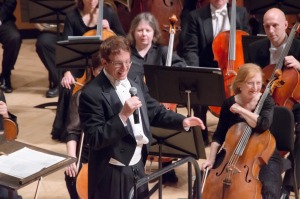 The concept of such a community, however, goes back to the 1960s and Pierre Boulez, who envisioned a “consortium” of musicians brought together for a multi-purpose group of players performing in many ensembles under a central common direction. Boulez also suggested the need to be experimental, to think ‘out of the box’ and to establish a new model of organization: “What we need is a think tank, to say how we can organize differently and to propose models of organization for those who are unable to conceive of new ways of organizing.”
The concept of such a community, however, goes back to the 1960s and Pierre Boulez, who envisioned a “consortium” of musicians brought together for a multi-purpose group of players performing in many ensembles under a central common direction. Boulez also suggested the need to be experimental, to think ‘out of the box’ and to establish a new model of organization: “What we need is a think tank, to say how we can organize differently and to propose models of organization for those who are unable to conceive of new ways of organizing.”
The structure of the CPS is indeed one of a community of musicians, who come together to perform in various ensembles, in different venues, with a passion for artistic excellence. The benefit of being a Performing Musician member of the Society is that the musician is eligible to be invited to perform in a Society orchestra. The Society also includes non-performing members, many of whom are amateur musicians. Under study are plans to institute a Society membership for non-performers – persons who have a passionate interest in classical music (and who may be amateur performers) who wish to support and mix with professional Performing Musicians.
First, a little history.
How did this interesting orchestra come about?
The orchestra was founded in 1988 by members of the Lyric Opera orchestra who wanted to play “on stage” during their off season. Jim Berkenstock, principal bassoonist, a founder, and a Board member for 24 years, explains:
“The true beginning was back in 1979. The Chicago Lyric Opera’s season was only 15 weeks (now it’s 24 weeks from September to the end of March). In preparation for contract negotiations back then, the “Longer Season” committee was formed. This committee did extensive research in many areas, to show the ways in which the Lyric season could be extended for a variety of needs. The Lyric Opera management wasn’t interested in doing things beyond what the season already entailed, so the committee decided that an orchestra should be formed as a self-governing organization, and we could create a longer season that way.
Every musician in the opera orchestra was invited to join. Each had to pay $200 to be a member – these dues were used as seed money to get the orchestra started.
We called our new organization the Orchestra of Illinois and it was active for about ten years. We ceased operations because of lack of funds, but after a hiatus of a few years, several people involved in forming the original orchestra decided to make another stab at doing something symphonic. We called our second orchestra Symphony II; I was a founding Vice President. We changed the name to Chicago Philharmonic Orchestra a few years ago.
In 1998, the founding President of Symphony II, Temma Abrams, a violinist, died suddenly. Thus I became President for ten years. The board was 12-15 members back then, but had very few musicians. The board did some selling of the orchestra’s services; the “Rent an Orchestra” program started out modestly. We gave free chamber concerts at Pick-Staiger Hall [on the campus of NorthwesternUniversity in Evanston], and invited all the former subscribers of Orchestra of Illinois. The following season we presented three concerts.
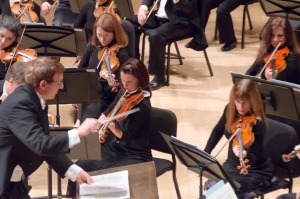 Originally we performed at the Civic Opera House in downtown Chicago [home of the Chicago Lyric Opera], but this was kind of a disaster. We started it as a festival season – the concerts took place within two weeks and involved a lot of singers. But the hall, which seats over 3,500, was way too big for operatic literature concerts (as opposed to fully-staged operas).
Originally we performed at the Civic Opera House in downtown Chicago [home of the Chicago Lyric Opera], but this was kind of a disaster. We started it as a festival season – the concerts took place within two weeks and involved a lot of singers. But the hall, which seats over 3,500, was way too big for operatic literature concerts (as opposed to fully-staged operas).
We moved to Pick-Staiger Hall because it’s a very intimate hall with no proscenium, it seats 1,000, and has a low stage – you can step up onto the stage from the main floor. The audience feels like they’re very close to the orchestra.”
Membership in the Society
The creation of the CPS is, in itself, unique – an orchestra born out of the desire of opera musicians to play symphonic repertoire. But its development over the years has continued its tradition of being non-traditional.
In the mid-years, money was always tight and the orchestra often couldn’t hire musicians far in advance, as they had to wait until the funding was in place. Thus they hired those free-lancers and Lyric Opera players who were available on somewhat short notice, and the roster of musicians associated with the orchestra kept growing.
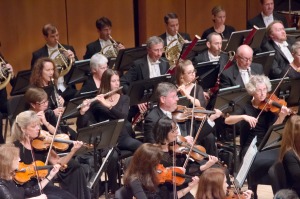 In its current incarnation, the organization is much more secure and stable, and so is the list of musicians who play regularly with the orchestra. But it’s not a roster-based orchestra with a “pecking order” of players, as is the case in most AFM orchestras.
In its current incarnation, the organization is much more secure and stable, and so is the list of musicians who play regularly with the orchestra. But it’s not a roster-based orchestra with a “pecking order” of players, as is the case in most AFM orchestras.
The CPS does not hold auditions, and the list of musicians in the program is extremely long. For example, there are 9 flutes, 12 clarinets, and 14 horns listed in the musician roster. Obviously, the Chicago Philharmonic uses the normal complement of strings, winds and brass in a concert, so why all the names? How do they determine who “gets” to play a specific concert?
Donna Milanovich, CPS Executive Director and COO, and former flutist with the orchestra, explained the process to me in detail.
The CPS has several Board committees that deal with all matters pertaining to the musician members of the Society: the Artistic Programming and Planning Committee and the Musician Personnel Policies and Procedures Committee (the Personnel Committee). The Personnel Committee has eight members, five of whom are musicians representing all instrument sections. A subcommittee of the two committees (the Artistic-Personnel Committee or APC) determines the specific invitations given to musician members of the Society to perform in a Society orchestra. The APC consists of the chairs of the Artistic and Personnel Committees, and the Executive Director, currently Neil Kimel, Reed Capshaw, and Donna Milanovich.
The details of the process of determining who is eligible to be invited to be part of a CPS ensemble are still being developed, but the process established in 2012 identified any musician who had performed with the Society at least once in the past three years as a Performing Member. Going forward, for the coming year, membership is maintained if a musician has performed three times in the most recent three years.
Prospective Performing Members are identified by current Society members or are musicians who have performed with the Society singularly in the past year. Artistic excellence is the driving force behind all memberships, performing or prospective, in the Society, as the Society seeks “to form the very best orchestras with the very best players, taking into consideration the repertoire.”
Why No CBA (Collective Bargaining Agreement)?
I explored at length with all the players I met with why the CPS doesn’t have a union contract that was collectively bargained, and if they feel it makes a difference. Over and over, the response was that Chicago scale is so high, the pay at the CPS is equivalent to area ROPA orchestras that do have a CBA, and given the nature of the CPS governance and artistic decision-making processes, with heavy musician participation, there’s really no need for one.
Bobby Everson: “We don’t have a CBA because it hasn’t been necessary. Other orchestras that I play in have CBAs because there were issues that couldn’t be resolved without one.
Because the Chicago scale is high relative to other AFM locals, we don’t need a CBA to make a living wage.
We don’t really have any issues with work rules because “management” are all musicians and they understand our concerns. There’s not a lot of complaining in the orchestra; people are happy to be there. Terrell Pierce [CPS personnel manager who has both music and arts administration degrees] has a lot to do with why people are so happy at the workplace – he understands our needs. We’re not reacting to bad things because the right people are in place to make certain the bad things don’t happen.”
Scott: “It may not be possible for the orchestra to go full-time. The CPS is not responsible for providing a full-time living to the players, so they don’t feel stuck. The players can choose not to play.”
Ann Palen, violin and a graduate of the Eastman School of Music: “I’ve been involved in negotiations at the Lyric, and I see musicians who know what’s going on and others who don’t. In the CPS we’re using our collective pool of knowledge to advance the orchestra. That’s what is so appealing about it to me. Other orchestras are not open to suggestions from the orchestra. Why? Because they want to keep things separate? Because it could be cantankerous? It’s nice to be asked, nice to be heard, and nice to be valued in the organization. With the CPS, there’s a feeling that you can make a difference. As a group you can direct, to some extent, where the orchestra is going. Your vision might be part of the future. That is what is so appealing about our approach.”
What about Scott Speck, the Artistic Director?
I asked the players what it was like to play in the CPO with Scott Speck as conductor. I was particularly struck by one statement from Scott Speck: “The musicians have such incredible richness to offer – they work with all these great conductors, not just me. And I’m not the chef – I’m just the waiter, and the musicians are the ingredients.”
Ann Palen: “We’re pretty new to Scott – I’ve only done two concerts with him, but he insists, “This is my vision – feel free to move [while playing].” David Perry, our concertmaster, is also a violinist in the Pro Arte string quartet [based in Madison WI]. He leads the orchestra as if we were playing chamber music, with Scott’s total approval – it’s a complete pleasure to play with him. He knows exactly what he wants.”
Jim Berkenstock: “Scott has a wonderful sense of collegiality; he’s elbow to elbow with the musicians. I’ve known conductors who didn’t want you to ask a question. He brings an enormous breadth of knowledge to the whole process, which is helping from an artistic standpoint. He has a very wide lens.”
Barbara Haffner: “It’s great to have a new conductor, with a new personality. His programming ideas are terrific – he has ballet ideas, and is an inclusive, positive, and healthy kind of person. We have the right conductor for us for now.”
Contracted Orchestra Services
Since its earliest days, the Chicago Philharmonic (or under its earlier names) has been the leading “orchestra for hire” in the Chicago metropolitan area. In May, 2012, the Chicago Philharmonic was chosen as the official orchestra of the Joffrey Ballet and provided its first contract performances in October to critical acclaim. The Chicago Philharmonic is also the orchestra for the popular Salute to Vienna concert at Chicago’s Symphony Center every holiday season. The CPS regularly performs with the innovative Music Paradigm corporate leadership program presented and conducted by Roger Nierenberg. Each summer for many years, the CPS has performed at Ravinia as the Ravinia Festival Orchestra and also as the Chicago Philharmonic. In that role the CPS provides musical services for a variety of genres, including classical, popular and rock.
Committee Structure
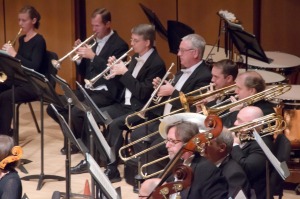 Since the founding of the Chicago Philharmonic Society, key musicians have led the Society’s operations and comprised an important portion of the Board of Directors.
Since the founding of the Chicago Philharmonic Society, key musicians have led the Society’s operations and comprised an important portion of the Board of Directors.
More recently, musician leadership and governance has been expanded. In particular, musicians are leading the artistic decision-making within the organization pertaining to music programming and personnel matters, supported by a cadre of non-musician board members and volunteers keenly interested in classical music, and highly involved in the non-artistic, business and administrative aspects of the Society’s operations.
The CPS has a variety of Board committees, all with some to many musician members. Every Board member is expected to serve on two Board committees.
Personnel Committee (Musician Personnel Policies and Procedures)
The Personnel Committee is in charge of developing and implementing all the Society’s musician policies and procedures. It also develops and refines the general groupings of all musicians in the Society for general engagement guidance. A roster for each concert is proposed with input from all sections and then sent for approval to the Artistic-Personnel subcommittee – the APC — who approve the selection of musicians.
Ann Palen: The Personnel Committee is one of the most thoughtful and respectful committees I’ve ever been involved with. The amount of sensitivity to how our decisions will impact people is not taken lightly.
Reed Capshaw: The Personnel Committee, which has eight members, oversees policy procedures, such as who should be included in the Society, as we recommend people not on the list. We put out feelers for high-level players around town. Inclusion in the Society, however, doesn’t guarantee being hired for a concert.
There’s not a high level of complaining going on but you can’t please everybody. Why is someone not hired? We want to be transparent enough yet have the highest quality orchestra. We want to make the principal players happy with who’s in their section. It’s tricky – people are candid with me about their perception of the process.”
Scott Speck: Choosing the roster is an interesting process. I urge the APC to hire musicians who play chamber music. There is not a sense of entitlement – they get the best possible musicians for the ‘product.’”
Artistic Committee (Artistic Programming and Policies)
Neil Kimel has taken over as Chair of the Artistic Committee, with Jim Berkenstock as an advisor. Scott Speck has an important say in programming but all committee members provide significant input. As the program starts to take shape, the committee discusses specifics: orchestration for the concerts, time constraints, is it too expensive to hire a Wagner orchestra for one piece, running time, etc.
Scott Speck describes the Artistic Committee as “a jovial group with lots of respect.”
Neil Kimel: “We owe a great debt to Jim, who was chair for a long time; we established the identity of the orchestra through his knowledge of the repertoire, both standard and non-standard. Scott also does a beautiful job – he trumps me with the best idea. For example, we were trying to put together a program of Danish music – it’s a challenge because the public doesn’t know any Danish composers and we were looking for a hook. Scott suggested the Tchaikovsky Hamlet overture – it took me a few seconds to “get” that but then I did, well, his artistic creativity humbles me.
We used to do a little more straight-ahead programming, with the orchestra rehashing the classics, because we wanted to get people in the door. Scott is taking the reins a little more, putting more of a challenge before the audience, and programming more creatively. This allows us to be more creative – we’re in a city with many large orchestras known for their ability to play the standard works. We’re looking for an identity niche that sets us apart a bit more. So we seek creative, season-long ideas – a theme to bring our season concerts together.”
According to Barbara Haffner, “There are no guarantees that we’ll actually perform what we decide upon because we may not have the money for a specific program.”
Patron Services Committee
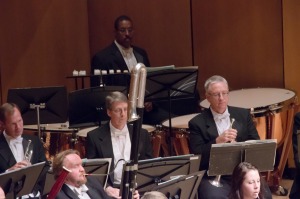 Bobby Everson: “I serve on the Patron Committee, which is just starting up. We discuss how best to serve our patrons, and sponsor initiatives like musicians going out and mingling with the audience before and after a concert.
Bobby Everson: “I serve on the Patron Committee, which is just starting up. We discuss how best to serve our patrons, and sponsor initiatives like musicians going out and mingling with the audience before and after a concert.
Donna asked me to serve on the Board and help form the Patron Services committee, which has a majority of musician members. At a recent board meeting, there were nine musicians and five non-musician board members. I anticipate my job will be reading the community – meeting concert goers before and after concerts, putting a friendly face before them. We don’t want to be distant.”
Institutional Relationships Committee
The Institutional Relationships Committee oversees the Society’s institutional fund raising program – grants from foundations and government agencies, and sponsorships from business organizations and other entities.
Musician Advisory Council
The Musicians Advisory Council (MAC) has 35 members, eleven of whom serve on the Board and another five who serve on Board committees. The process for identifying MAC members has been evolving, but basically members on the committee are those who show an interest, are active and committed to the organization, and are prepared to participate in organizational matters as well as play. According to Paul Judy, MAC members are also “ambassadors” for the Society.
Reed Capshaw: “When I was first brought on board, Donna asked me to be part of the MAC, and I didn’t understand why. I’d played with the CPO occasionally but I was never even on a list – I was recommended by the principal. But I’m glad I did join. MAC meetings act as a forum for ideas; we decide the direction of the organization. Sometimes we break down into complaining about things, but not often.”
Bobby Everson: “The CPO is different because we have direct input into every aspect of everything. In other orchestras we’re separated from the decision making and we find out about it afterwards. Here, we have a say in programming, venues, soloists, etc.”
The Chairman’s Role
Paul Judy serves as Chairman of the Board and CEO of the CPS. Throughout his years on the Chicago Symphony board and as President of Symphony Orchestra Institute, publisher of Harmony magazine, Paul Judy has spent much of his life thinking about orchestra organizations – trying to get them to function more effectively, examining what has gone wrong when orchestras end up in work stoppages, and exploring successes when an orchestra tries a new governance technique.
According to Paul, “The fundamental structural issue in the orchestra field is the separation between musicians and governance/management, which is also implicit in the bargaining agreement. This is exacerbated by collective bargaining agreements, which implicitly establish adversarial positions. Labor law protects this arrangement, so traditional orchestras are very difficult, almost impervious, to change.”
Paul’s vision for the CPS involves a roster of musicians, joined by a dedicated and creative group of non-musicians, developing a common vision for the Society and all its musical activities.
Donna Milanovich: “Paul has created not only an artistic model but also a financial model. We have contractual income plus certain types of fee concerts that creates a mix to eventually support what we hope will be a sustainable base. We’re not as reliant on individual contributors as most orchestras.
Our strength is in our musicians but we couldn’t have started this process without Paul’s guidance. Our visions are coming together to create something quite exciting. He has helped us prepare a structure that we can adapt or work from. He’s always saying, ‘Propose something and let people work against it – see what comes out’ rather than ‘Do this.’
Paul’s belief is that musicians have the intelligence, ability, determination, and dedication to devote time to organizational matters and make them work.”
Bobby Everson: “Paul’s idea of a player-led orchestra is a great experiment and we’ll do what we can to make this work.”
Terrell Pierce: “This is the second full season where we’re trying to implement a musician-led, musician-driven model; we’re still working through a few kinks.
The communal movement among the players affects the public’s view of the organization; the musicians love playing with each other. There are sections of some orchestras where no one will speak with each other – relationships are sour. Musicians in the CPS have a high mutual respect for each other – they’ve watched each other work hand-in-hand throughout the city. We have a lot of free lancers who depend on each other for work. The community aspect of the orchestra makes the musicians enjoy playing the music – they also enjoy the repertoire.”
Jim Berkenstock: “I have to pinch myself sometimes. I thought we were months away from pulling the plug, and then Paul came along. The change didn’t happen overnight, but Paul saw something in the CPS that intrigued him. It took him a while to figure out what the real potential was, and how much he wanted to get invested from a personal standpoint. If I had had to dream up a savior coming along to help out, I couldn’t have imagined one as good as Paul.
When Paul got involved, his main interest was to get more musicians involved. Our experience had been that it takes a lot of work and time to get a large group of musicians making decisions and participating in committees. We didn’t have that luxury. We did consult with various people in the orchestra, and tried to invite their participation by soliciting ideas and suggestions, but mostly musicians are busy trying to earn a living.
When I was working day and night trying to keep the orchestra alive and functioning, I had one part-time staff person. It took every ounce of our time and energy to organize those things and try to keep the orchestra going. It was like bailing water in a sinking rowboat. We presented fabulous concerts but we didn’t have the money for them to become really recognized and valued. We were trying to keep the orchestra afloat until bigger help arrived, because there was nobody on our board who had any really strong connections with the community. We were almost at the point of cashing it all in – it was becoming clear that we couldn’t go much further.
One of the big differences with Paul is that we have more staff. (And I wish I had a fraction of Paul’s energy!) The extra staff enabled us to bring a lot of orchestra members into the structure, and create a structure that’s allowing a sense of ownership. It’s interesting and gratifying to see members respond because they realize that something new and exciting is going on. Getting the Joffrey Ballet relationship in place was a big thing, especially for free-lance players who don’t play in the Lyric. It changed the attitude of the musicians towards the orchestra, as they are making more income from the CPS and have a say in how things are being done. There is now a feeling of a community of musicians.”
Reed Capshaw: “Can we be a model for other orchestras? The CPS was started by musicians, the Board has many musician members now – it makes total sense. The idea has been presented to other orchestras to have more musicians on the Board, but it’s difficult for a Board to accept the idea of having more than one or two. The Board has to accept the idea that it’s a partnership – in most orchestras there’s too much ‘us’ vs. ‘them.’”
Neil Kimel: “I like the way the orchestra is being run now – it was Paul’s idea for the musicians to have much more input and activity vs. our just showing up with our instruments. I was a free lancer and didn’t have more ties to the organization than playing my instrument. Now I’m much more involved and I feel a real commitment to the final product. I care about who is onstage with me, what we are playing, all the things that connect to make the final product happen.
At our Board meetings we review lots of materials. It’s fascinating to see how we operate – it’s actually staggering. The Chairman has really revamped the orchestra in a short period of time. It’s a better way of running the operation – we are making a whole new model. When our meetings happen, stuff gets done – we’re always looking to the future. The orchestra is really growing as a result of everyone’s involvement. Donna also does intensive hard work. The difficulty with all these committees is that she has to check in with all of them. We have grandiose ideas and she has to put them into practice. Paul’s and Donna’s energies and personalities complement each other well.
What has changed since Paul came? Because of his modeling (and Scott as well), he wants us to define ourselves as an orchestra not only by the music we play but also visually. We move more, we’re more like a large chamber orchestra than the Chicago Symphony. We’re also doing some small concerts, which is helping to build the chamber music vibe within the symphonic structure. The larger orchestras don’t have time to work on those skills. Scott is revitalizing the stodgy people in their tailcoats.
We are breaking the surface on these ideas with each concert. We have that core of people – many of whom play in Lyric together where we have an existing way in which we play. We’re an orchestra of opera performers – we follow the singers, so we’re more flexible, and our ears are always open (as well as our eyes). What’s going to happen next? We’re a more malleable ensemble than a purely symphonic one.”
Summary
All in all, the CPS is most unusual and, I’d say, a unique organization, well worth keeping an eye on as they “work out the kinks” and “figure things out” and “find the balance.” As Reed asks, can the CPS be a model for other orchestras? Only a few large metropolitan areas have a base union scale as high as area ROPA orchestras, and even fewer cities have a fabulous opera orchestra eager to play symphonic repertoire. But many of the ideas and procedures presented here are certainly applicable to other orchestras: a Musicians Advisory Council, more musician involvement throughout the organization, and building a sense of collegiality when playing together. Why is it that so many symphony musicians are profoundly dissatisfied with their jobs while CPS musicians love playing in their orchestra? Not really a fair question, but an interesting one!
[1] Polyphonic.org is hosted at the Eastman School of Music

